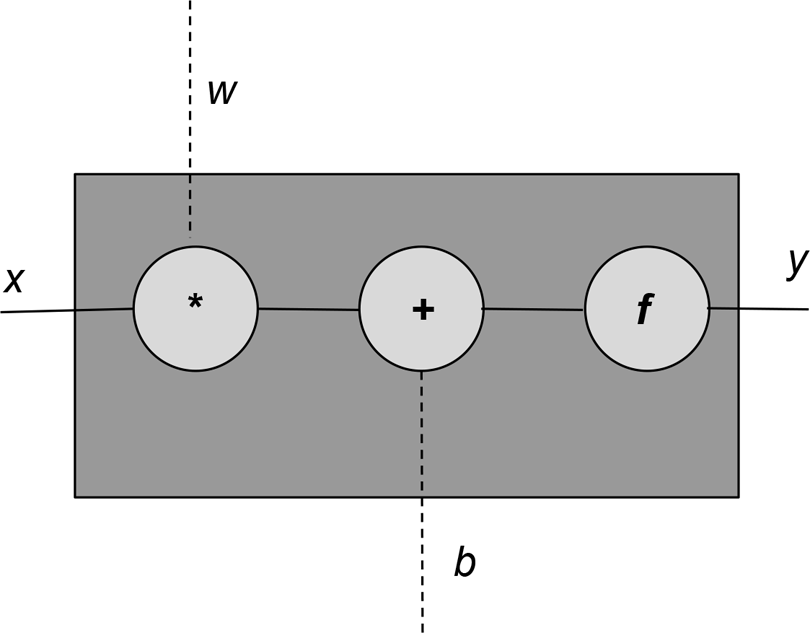Chapter 3. Foundational Components of Neural Networks
This chapter sets the stage for later chapters by introducing the basic ideas involved in building neural networks, such as activation functions, loss functions, optimizers, and the supervised training setup. We begin by looking at the perceptron, a one-unit neural network, to tie together the various concepts. The perceptron itself is a building block in more complex neural networks. This is a common pattern that will repeat itself throughout the book—every architecture or network we discuss can be used either standalone or compositionally within other complex networks. This compositionality will become clear as we discuss computational graphs and the rest of this book.
The Perceptron: The Simplest Neural Network
The simplest neural network unit is a perceptron. The perceptron was historically and very loosely modeled after the biological neuron. As with a biological neuron, there is input and output, and “signals” flow from the inputs to the outputs, as illustrated in Figure 3-1.

Figure 3-1. The computational graph for a perceptron with an input (x) and an output (y). The weights (w) and bias (b) constitute the parameters of the model.
Each perceptron unit has an input (x), an output (y), and three “knobs”: a set of weights (w), a bias (b), and an activation function (f). The weights and the bias are learned from the data, ...
Get Natural Language Processing with PyTorch now with the O’Reilly learning platform.
O’Reilly members experience books, live events, courses curated by job role, and more from O’Reilly and nearly 200 top publishers.

